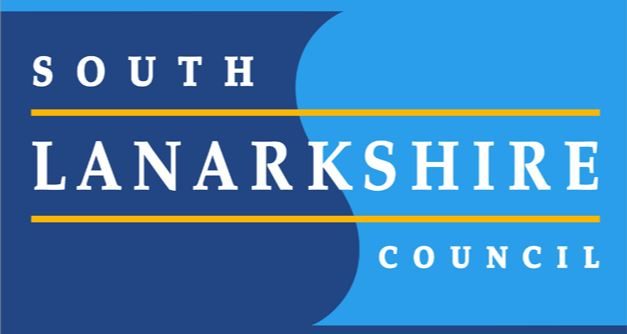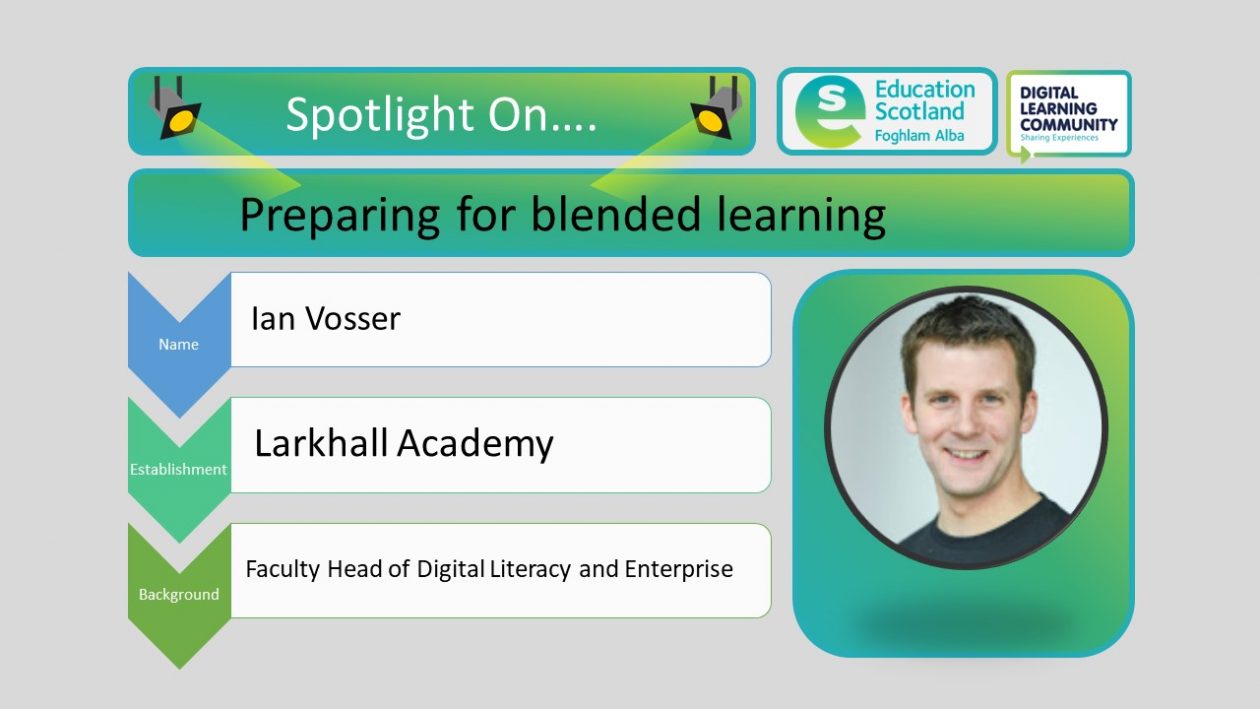 Blended learning that maximises the time in the classroom with the teacher and provides an engaging online experience is the challenge many schools are being faced with. At Larkhall Academy, we are currently exploring the best way to meet this challenge, finding the balance between introducing new ways of working while honing in on the interventions and pedagogical techniques that have the greatest impact when we have learners in class. Our blended learning approach is likely to consist of three strands; in class learning, synchronous learning online and asynchronous learning at home. I’ll outline how each of these might look and how we might overcome the barriers we face.
Blended learning that maximises the time in the classroom with the teacher and provides an engaging online experience is the challenge many schools are being faced with. At Larkhall Academy, we are currently exploring the best way to meet this challenge, finding the balance between introducing new ways of working while honing in on the interventions and pedagogical techniques that have the greatest impact when we have learners in class. Our blended learning approach is likely to consist of three strands; in class learning, synchronous learning online and asynchronous learning at home. I’ll outline how each of these might look and how we might overcome the barriers we face.
When learners are in class, we want to ensure that the high quality learning experiences focus on the aspects that require the most teacher input. This is done in one of two ways; introducing new content with clear explanations and models ensuring that learners will be able to continue their work once they’ve left the classroom or taking the flipped learning approach where new content has already been accessed and the focus is now on application of that knowledge. Different subject specialisms and topics within those specialisms will have different drivers, teachers will need to carefully consider what will be covered and then identify the key aspects that will be focussed on during the in person learning. Effective explanations, modelling and questioning will be essential during this time with high levels of teacher-learner interaction.
We are also planning on supporting our learners with live lessons being delivered online via video conference. Google Meet will allow us to securely connect with learners and deliver live teaching with a high degree of flexibility. It is possible that a teacher could deliver their lesson from a classroom or from home with learners connecting from a location that works for them. This might be a quiet study area in school or their home. As we begin piloting our approach, we are drawing experiences and ideas from those who have already begun. For example, we have strongly recommended that all Meets will be recorded and mandated that recordings of live lessons that feature children and young people cannot be shared. Alongside safeguarding considerations, we are giving extensive thought on ensuring equity with our live lessons because no-one should be disadvantaged because they could not access a live lesson. We undertook early identification of our most vulnerable learners and made digital devices and Internet connections available to those who needed it. This provision will be extended when we return to school and those who are struggling to engage will be further supported. Live lessons may be split into two parts, an initial part that includes only the teacher delivery and then a second part with teacher and learner interaction. This would allow part one to be made available to view again later as part of the asynchronous learning offering. Alternatively, this live lesson might be entirely made of learner-teacher interaction to reinforce or support the learning that has already occured in the classroom. One area where we see video conferencing as offering real opportunity is in the delivery of 1:1 mentoring and support to learners. We can all appreciate how a quick conversation can resolve misunderstandings, provide clarity or guidance in both curricular and pastoral settings. Undoubtedly our approach will change as we understand how time is balanced between home and school learning but the focus will remain on ensuring that the opportunities to connect with learners are as broad as possible.
Between March and June our exclusive focus has been on delivering asynchronous learning at home. In these unprecedented times, we agreed making learning available that could be accessed at any time was the best way to support the learners and their families in our community. This has consisted of many teachers using Screencastify to record lessons that have then been made available using Google Classroom. Creating that personal connection is essential to maintaining consistency and familiarity of experience for children and young people. The nature of the videos created varied widely across all subject areas but shared a common purpose to support learning at home. As a leadership team we agreed a schedule for posting work and setting due dates. The scheduling functionality in Classroom allowed teachers to assign work at times that suited them allowing for flexibility when supporting home working. This routine was published on our social media channels and supported with subject specific messaging. We also benefited greatly from being the Google Classroom guardian email summaries pilot school for the Glow tenancy in Autumn 2019. This allows teachers to register email addresses for parents and carers, allowing them to get either daily, or weekly updates on the work that has been set. These emails have acted as conversation starters for families and helped increase engagement with the assigned learning at home.
Feedback to learners is a focus of Learning and Teaching Framework and this continued when working and learning at home. Feedback took the form of comments and emails as we initially got to grips with exclusively working online. Our focus is now turning to maximising the use of features like Rubrics in Google Classroom and the Comment Bank in Google Docs to help teachers be as efficient as possible. When introducing new tools to teachers providing training and time to develop the skills and understanding is essential. We have delivered an extensive staff learning programme during this time through the use of Google Meet and YouTube live streaming. We have made as many of these videos as possible publically available to help support others too. An exciting development was the training, delivered by a short YouTube video series and a live stream, in using Virtual Jotters. A Virtual Jotter is a space where all related learning can be stored together and added to over time by learners. The familiarity with the concept of a jotter really helps children and young people collate their work. As asynchronous learning becomes only a part of the learning offering, having resources that can be accessed across all three spaces becomes increasingly important as will how we structure the learning at home alongside the live lessons and learning in class will be.
The scale of the challenge to align these three strands is an almighty one but finding innovation in our system and allowing it to scale will help us build a consistent learning experience for all. Sharing stories of success across the faculty areas will help us identify effective practice and continue to improve our offering. Underpinned by a continuous focus on the quality of learning and teaching linked with ensuring the technology supports this, should hopefully facilitate success in our blended learning approach. Watch this space!
Larkhall Academy tweets @LarkhallAc. Ian Vosser tweets @MrVosser.



